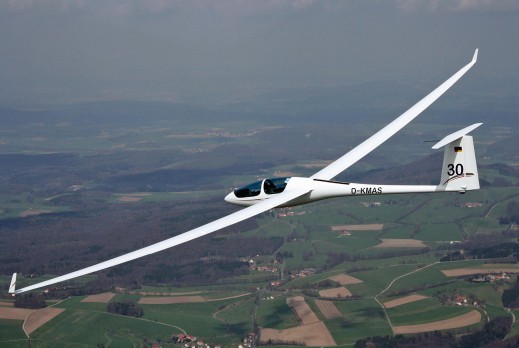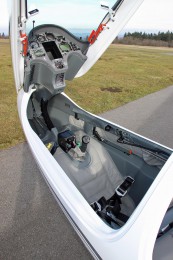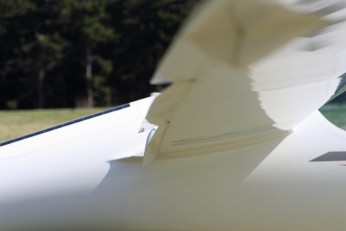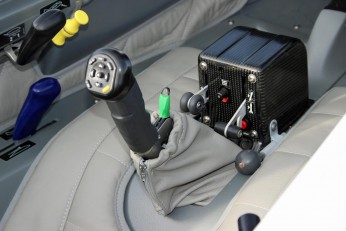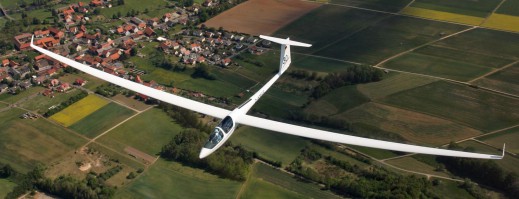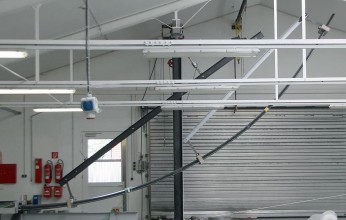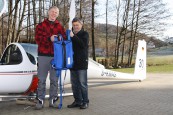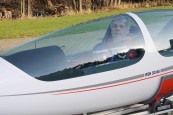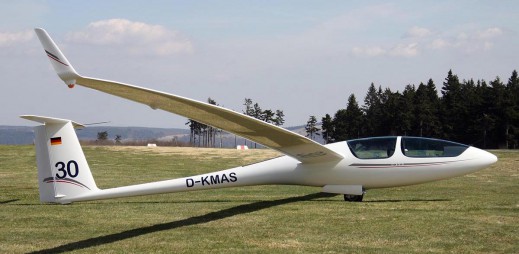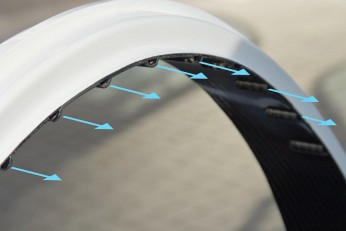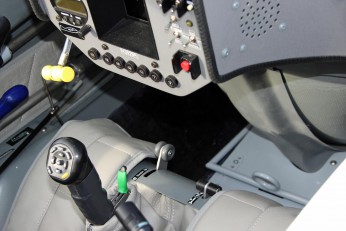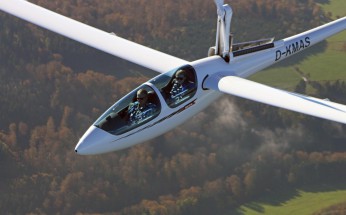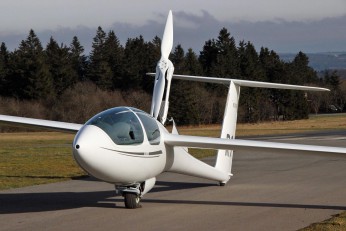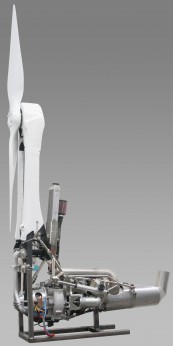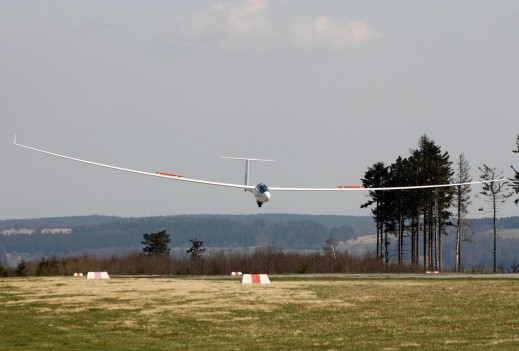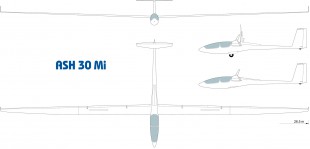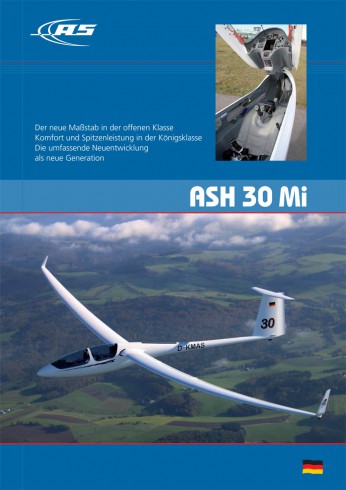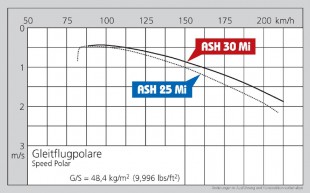- Comfort and top performance in the premier class
- A comprehensive, new, generational design
With the ASH 25 Schleicher set its sights in the Open Class at a very high level. It was not only its ability to finish near the top in competitions but also the ability to break world records which distinguished the ASH 25. Suddenly, a two-place sailplane greatly expanded the possibities for open class aircraft. The sharing of flying tasks and also providing high performance cross-country training were only two advantages that became available with the ASH 25.
Often, the second seat also meant that partnerships could be formed and maintained economically for sailplanes with this level of performance. Careful further development with variations in span all the way up to the ability to self-launch meant that in a time span of over 20 years a total of 266 ASH 25s were produced – a record for the open class.
From the ASH 25 to the ASH 30 Mi
But at some point the possibilities for meaningful improvements in even the best sailplanes are exhausted and the market signals that the time has come for something completely new – the ASH 30 Mi.
Starting with something completely different and conceiving a totally new sailplane was not only a courageous business decision but also a very challenging task for designer Martin Heide and his team. For example, even in the open class these days no one is interested in doing without a safe, comfortable and well laid-out cockpit or without the advantages of automatic control connections when assembling and dis-assembling. It was a significant challenge to retain and even improve upon all the advantages of the ASH 25 but, in the end, it led to a new generation of open class sailplanes. Outstanding flying characteristics and ease of handling are also a given.
The speed polar clearly suggests a great leap forward in performance compared to the previous open class. The cross-country pilot can expect significant advantages especially in the high speed range – the ideal conditions for exploring tremendous new possibilities. In addition, the magnificent feel for thermals is attributable to the new wing airfoil, specially developed for the ASH 30 Mi. State-of-the-art airfoil technology has also been used for the horizontal and vertical stabilizers.
The well-balanced flight characteristics are a particular feature of the ASH 30 Mi, a sailplane in which you immediately feel at home. Designer Martin Heide was able to realize his ambitious goals not only in terms of efficiency of the control surfaces, roll rates and good-natured flight behaviour but pilots on long flights will also be thankful for the light control forces, rather unusual for an open class two-seater.
Highest quality craftsmanship
With the ASH 30 Mi the pilot obtains a sailplane, built in a detailed, elaborate, hand-made process, which cleverly combines the excellent features of a single-seater with the advantages of a two-seater. This is the key to help pilots fulfil their dreams and ambitions.
Naturally, safety was given top priority during the development of the ASH 30 Mi, for example, with the very strong safety cockpit. But also good-natured flight characteristics and comfort were right at the top of the agenda.
A completely new airplane
The completely new wing is fabricated with ultramodern fibre materials. This required a large number of preliminary tests. The picture on the right shows what a modern CRP wing can withstand.
Due to the slightly longer inner wing panels, the outer wing is very easy to handle. This brings significant advantages when searching for hangar space. Fitted with just the inner wing panels, the ASH 30 Mi has a span of only 13m (42.6 ft). Automatic control connections make the mounting of the outer wing very easy.
More space and comfort in both cockpits
The completely new development of all components also makes it possible to incorporate many helpful details and improvements. For example, we have succeeded in creating front cockpit space which is otherwise known only in single seaters.
But more space was also created in the rear cockpit to ensure that tall pilots will be comfortable during longer flights. And, of course, there is an adjustable ventilation nozzle on the cockpit wall for the rear pilot. An additional anti-misting ventilation system for the rear canopy is integrated into the frame between the two canopies.
Especially the sophisticated ventilation system and the high quality construction and fit of the dual canopies results in remarkably low wind noise even at high speed. This is also an indication of the excellent flying performance. Very good visibility from both cockpits contributes signficantly to flight safety.
Full dual control in the rear cockpit.
In a two-seater one expects a full control system in the rear cockpit. Even the landing gear can be operated from the back seat. The same is true for the engine system. The engine control instrument, the starter button and the levers for throttle and propeller stopper can also be installed in the rear cockpit. Consequently, the pilot in command can be in the back seat.
Powerful, proven and low fuel consumption
The well-proven, liquid and air cooled rotary engine manufactured by Austro Engine is also installed in the ASH 30 Mi. It’s equipped with a dual ignition system and a fuel injection system for optimum ease of operation. This compact engine system with the specially designed Schleicher propeller has proven its reliability in more than 500 self-launching Schleicher gliders.
Thanks to the electronic fuel-injection system, the fuel consumption is significantly lower compared to conventional two-stroke engines. The 14 litre standard fuselage tank allows almost one hour of engine run time. Its modern fuel injection system features automatic altitude compensation to ensure that the generous power output of 41 kW (56 hp) is almost uncompromised at altitude.
Another major advantage of the engine is the vibration-free operation at all power settings. This allows extended power cruising for ferry flights and avoids the usual “saw tooth” climb/cruise method. Even flying through controlled airspace at an assigned altitude presents no problem for this aircraft or its engine. It is best conducted at 70 to 75 kt (approx. 140 km/h) and provides another most welcome advantage over conventional two-stroke technology because of its typically quiet operation and lower noise levels in the cockpit.
Compact and maintenance friendly
For lowest possible noise levels, a folding propeller drive belt allows the engine to remain stationary in the fuselage where it is permanently connected to a large volume muffler. Only the retractable propeller tower extends into the airstream thereby creating very little aerodynamic drag.
But that is not all this engine has to offer. For maintenance purposes the entire power plant can be easily removed. It has no service life limitations and doesn’t require an overhaul after reaching a certain number of running hours or years of service.

